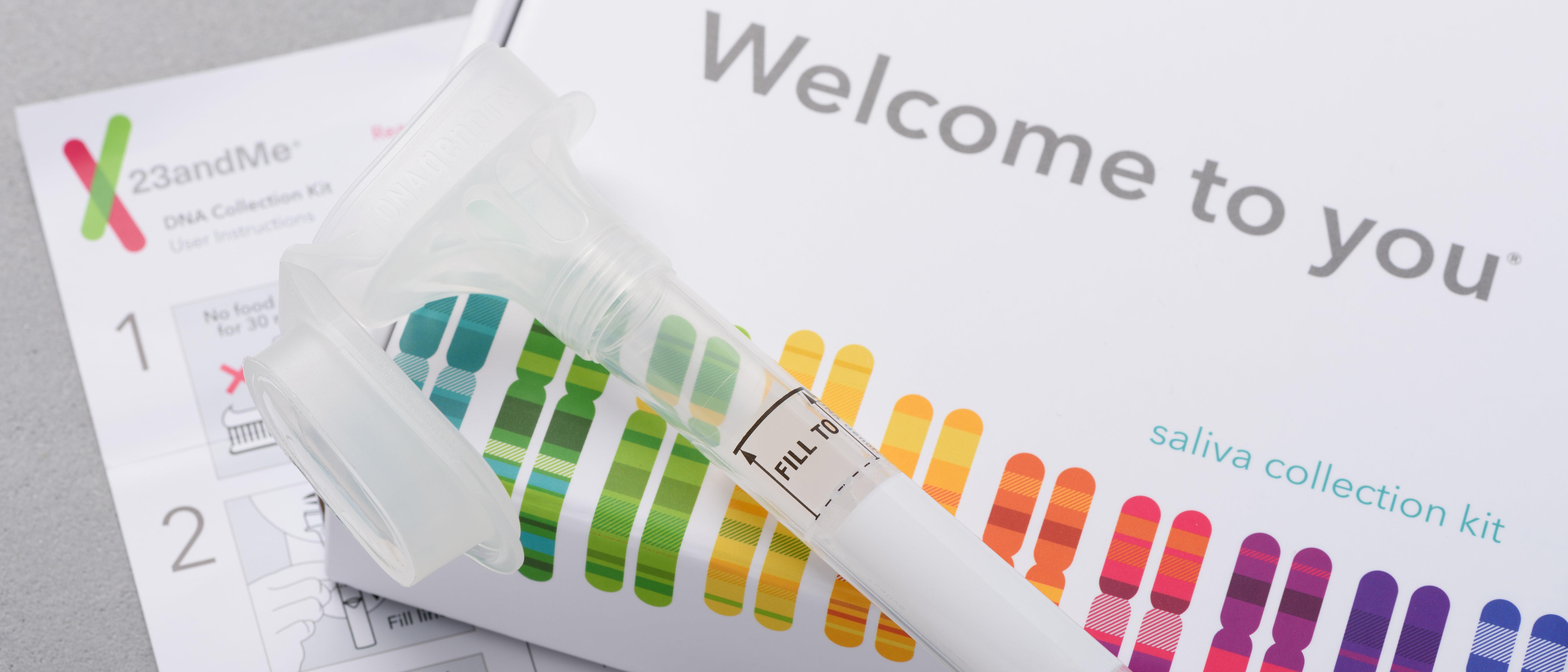TechRadar Verdict
One of the most popular DNA tests on the market and it’s easy to see why. Results from 23andMe are thorough and, thanks to a great dashboard, easy to navigate and understand. It’s also one of the few DNA tests to provide detailed information about both your ancestry and health.
Pros
- +
Great, in-depth results
- +
Ancestry and health information
- +
Fantastic interface
Cons
- -
Expensive
- -
Not many genealogy resources
- -
Data sharing settings could be clearer
Why you can trust TechRadar
23andMe is a brand that has quickly become synonymous with DNA testing. With more than 10 million users it’s one of the most popular DNA test kits on the market. This is good, the more people in 23andMe’s system, the better many of the ancestry results are likely to be – and the more relatives you can connect with.
Unlike some other DNA tests on the market, 23andMe offers up a huge amount of insights about both your ancestry, including your genetic ethnicity and relatives, and your health, which includes genetic health risks. Not only are all of these results detailed, but they’re easy-to-understand as well, thanks to a great user interface.
Here’s our experience with 23andMe DNA testing, including picking the right DNA test, sending in a sample of your DNA, and finding out the results a few weeks later
23andMe price and testing types
- Two different options
- Expensive, but competitively priced
There are two different types of 23andMe DNA test. The first one is Ancestry ($99/£79, or around AU$145), which provides details about your ancestry composition (this means where in the world your ancestors are likely to have come from).
It includes maternal and paternal haplogroups (different branches of ancestry from your motherline or fatherline), Neanderthal ancestry (what percentage of your DNA is likely to have come from a Neanderthal line) and information about your DNA relatives.
The second type of 23andMe DNA test is Health and Ancestry ($199/£149, or around AU$300). This includes all of the information above from the Ancestry test, as well as health predisposition reports (these include data about predispositions to conditions including age-related macular degeneration and variants for breast, ovarian and other cancers).
It also includes wellness reports (these tell you about your sleep, weight and muscle composition), traits reports (this is information about your hair, skin and tastes) and, finally, carrier status reports (these include results about whether you carry genes that could be responsible for conditions such as cystic fibrosis or sickle cell anemia).
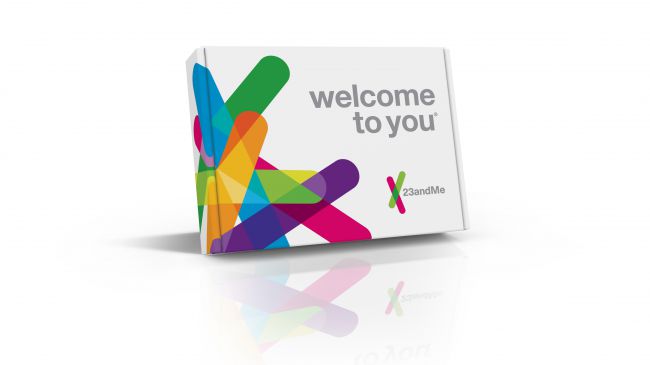
Whether or not you can access the full suite of DNA results may depend on where in the world you live and when you took the test. For example, recent users can now access data about their predisposition to type 2 diabetes, but if you took the test a few years ago you won't be able to see that data.
The pricing of 23andMe’s ancestry test is similar to other tests on the market. For example, AncestryDNA is also $99/£79/AU$129 and MyHeritage is $79/£75 (around AU$115) plus shipping.
However, both of these brands tend to have regular discounts. For example, MyHeritage is currently available for £59 in the UK. It’s rare to find 23andMe discounted and usually only happens on Amazon Prime Day or other big sale events.
When it comes to DNA tests that offer both ancestry and health information, 23andMe is one of the few that offers such a thorough set of results. However, MyHeritage has just added health testing too and a kit that does both costs $199/£179 (around AU$300) plus shipping.
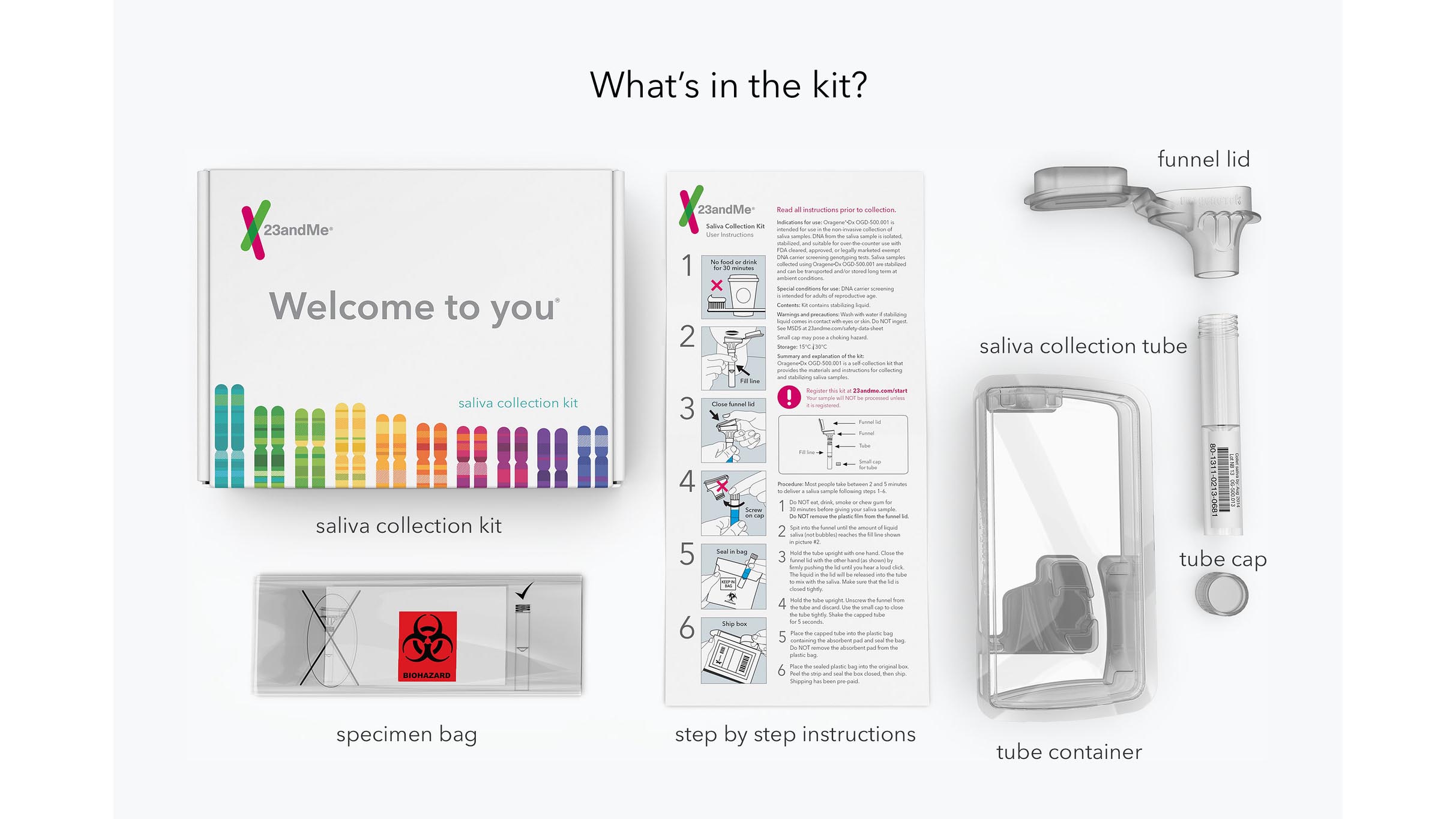
Testing and postage
- Easy testing
- Free postage
- Lots of questions to answer
The 23andMe test arrives in a small box around 3 days after you’ve ordered it – and everything you need to take the test is inside.
Testing requires a saliva sample. You need to spit into a funnel – it can take a while to fill it up. Then you put a top onto the funnel, which releases a special liquid to preserve your DNA sample for testing.
You then need to register your kit – there’s a unique number on the box and on the tube – before you send it. This is really important, once it’s gone, it’s gone, and your name isn’t associated with your DNA sample.
While you’re registering, there are lots of questions you’re asked to answer to make your results more relevant. However, many of the answers that were given ended up being presented in the results, so it felt like some of the answers were parroted back rather than obtained from the DNA sample.
Once you’ve registered your test and provided a sample, you need to secure it and send it – postage is part of the price of the test.
We received a review sample of the 23andMe test, which means we can’t comment on how long the results take – but according to 23andMe, they now take between 2 to 4 weeks.
However, throughout the process, 23andMe will send emails, with the first acknowledging your sample has been received, and then another email is sent when it’s being tested with a final email informing you when your results are in.
Results and dashboard
- Intuitive dashboard
- Results are easy to navigate
- Lots of interesting information
The best thing about 23andMe in comparison to other DNA testing kits and services is the level of detail it offers up - there’s a lot of information about you and your background to comb through.
But what makes the service great to use is its dashboard. It’s colorful, extremely easy to navigate and ensures that making sense of all the insights about your DNA is simple and even fun.
The results you’re presented with will depend on which test you went for. We had a Health and Ancestry test, which means the dashboard was divided up by those two sections.
Click on the Ancestry section in the main menu on the dashboard and you’re greeted with your Ancestry Overview. This is where your estimated genetic ethnicity is visualized in a number of different ways, including in a pie chart, showing the various percentages of ethnicity that make you, well, you!
Click on this and you can then use an interactive map to see how your distant relatives may have been spread across the world.
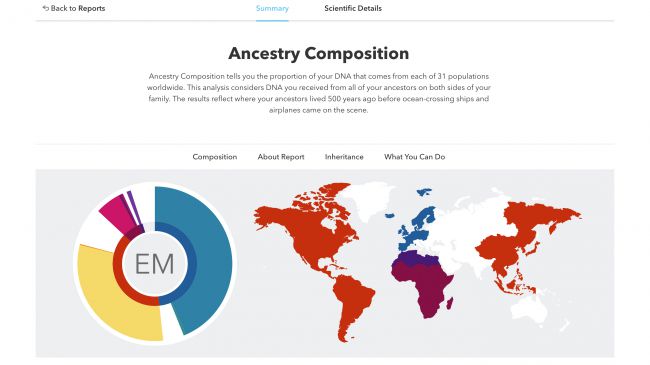
Click on a section or area and you’ll be given even more detail. For example, our results showed that we have 14.9% French and German ancestry, but if we click into that section, we can see it’s more specific to the Hauts-de-France area.
You can also visualize this data on a timeline to see where these various ancestry details go back to. For example, according to 23andMe we have a small percentage of Scandinavian heritage, which dates back to 1810.
You can also dig deeper and see how certain chromosomes are affected by your genetic ethnicity composition results. This is what we love about 23andMe - you can just look at a simple pie chart or start getting into the nitty-gritty of how your chromosomes are likely affected by your past.
It’s also here that you’ll find information about how many Neanderthal variants you have in your DNA – and how you compare in this respect to most other people who have taken the test. For example, we have more Neanderthal variants than 84% of 23andMe customers.
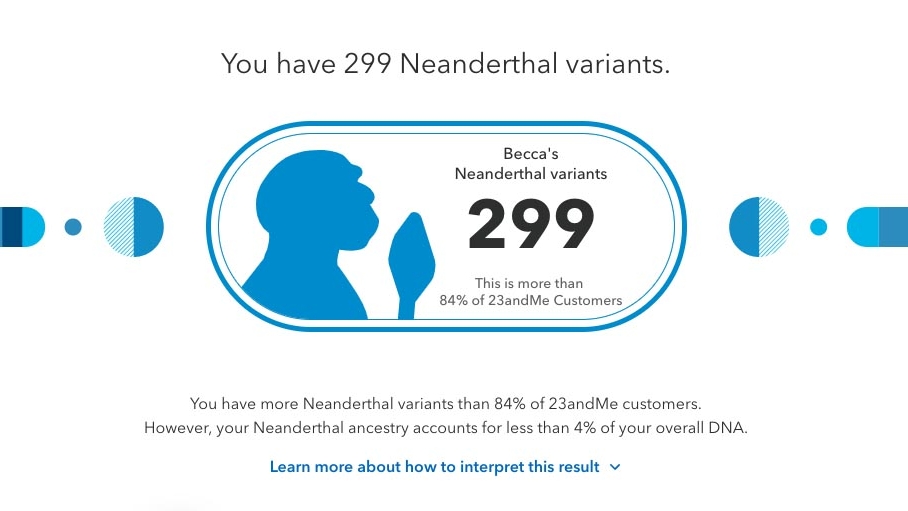
Because 23andMe examines mtDNA, which comes from your mother, and yDNA (if you were born male), you can get a good indication of your haplogroup from each side too. This is the group of humans you descended from that gives information about how your ancestors may have migrated.
It’s in the Ancestry section that you can also see your DNA Relatives. This is a huge database of people who share lots, or just some, of the same DNA as you. Of course, this will depend on who has taken the test.
For example, our mum has, so she’s our top match (obviously!) but below her there are 1,228 other DNA relatives, including a second cousin we didn’t know about and many, many, many fifth cousins.
The data you see about these DNA matches will largely depend on what they’ve allowed you to see. For the purpose of this review, we decided to make most of our data available to anyone we're matched with, which includes a short bio and information about family background, as well as allowing sharing invitations from any matches too.
You can then click onto people you’re matched with and take a close look at how their data compares to yours. For example, doing this with our mum’s DNA was fascinating, as we could see exactly which DNA segments we have in common.
If you’re connecting with a relative you’ve never met before you can also send them a message and they can send you one – again, you can change these settings if you’d rather keep things private.
Next up, there’s the Health section. This is where you’ll find a number of personalized reports relating to your health. The most important thing to remember here is just because 23andMe flags that you could be a carrier for a certain genetic condition or you’re predisposed to something health-wise, you won’t necessarily have it and may never have it – and vice versa.
There’s a section called Health Disposition, which is where genetic factors have been found that could predispose you to certain conditions, including Parkinson’s disease and celiac disease. You’ll be told whether no variants are detected or if there’s an increased risk. Then, you can click on each condition to find out more about it and what predisposes you to it.
Carrier Status is a section that’s laid out in a similar way, but this explains your predisposition for carrying certain genes, which means they may not affect you, but you could pass them onto your children.
There are then a range of other less serious, but still very interesting, results, about you and your personal traits. For example, we found that we're likely to be an early riser, have motion sickness and get freckles. Although it’s cool to see all of this data written out, they are all things we could have told you already.
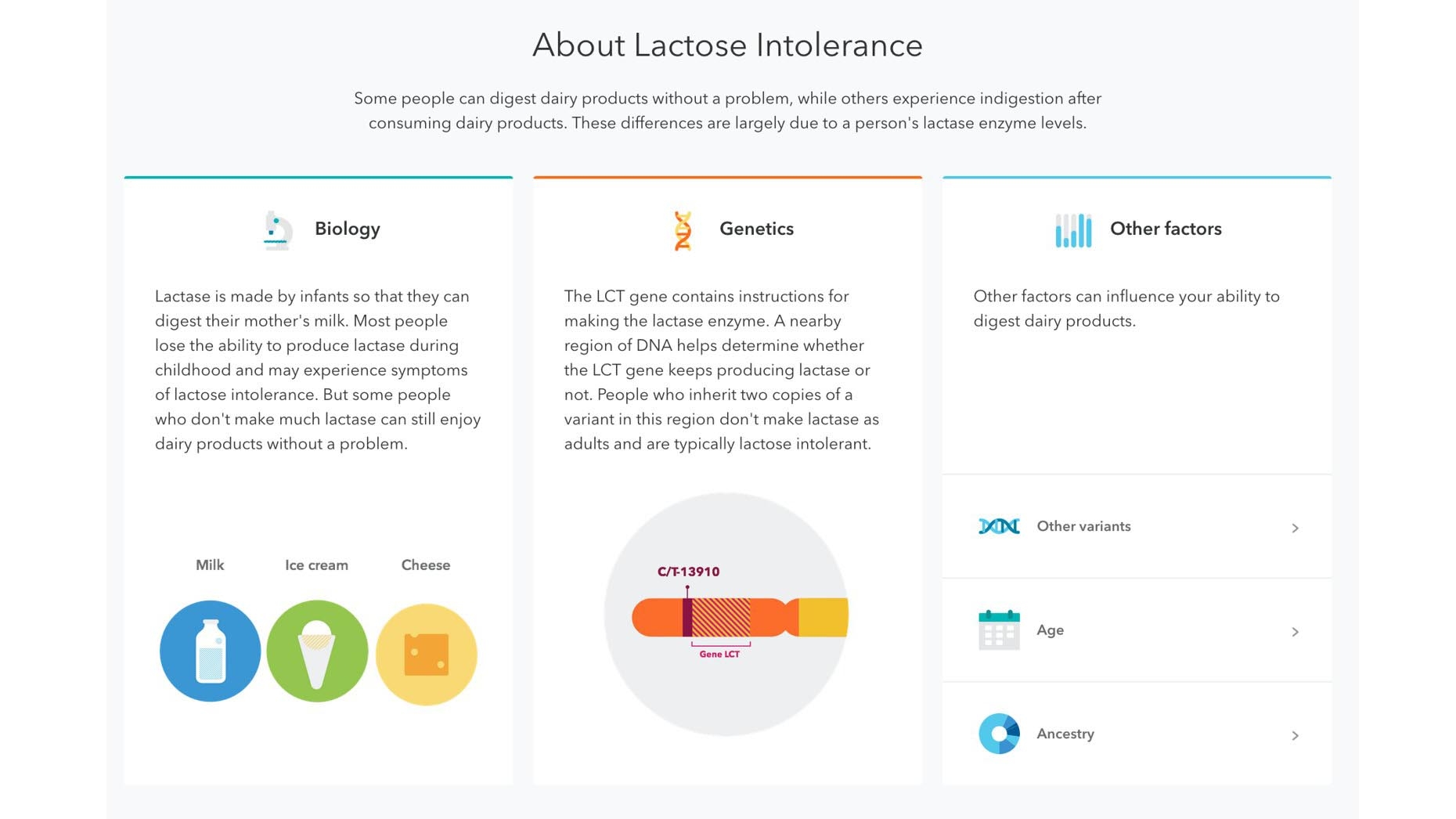
Your experience with the Health section may vary, but some of the more serious conditions, like Alzheimer’s or the likelihood you carry the BRCA1/BRCA2 variants that can be responsible for breast cancer, will be in a separate section you need to give your approval to ‘unlock’.
We won’t be delving into wider privacy issues for this review (check out our DNA testing guide for more on that), but it’s worth mentioning that you do have plenty of control over your data with 23andMe. While you’re registering the kit, you’re asked to give various levels of consent to share, or not share, your data. Which you can then alter in the dashboard’s settings once your results are in.
The data sharing is a little confusing because there are a few different things going on and none of them are as clear as they could be. Firstly, you’ll need to consider whether you want your DNA relatives to be able to see your details and send you sharing invitations – a must if you’re keen to build your family tree, but you may not feel comfortable with this for whatever reason.
There are then also permissions that need to be granted or denied about whether your data can be used for research purposes.
For example, we liked the idea of our results being used as part of a wide group of results in big studies, but not the idea of our individual results being used – there’s an option to switch either of these on or off after you’re already opted in to general research consent.
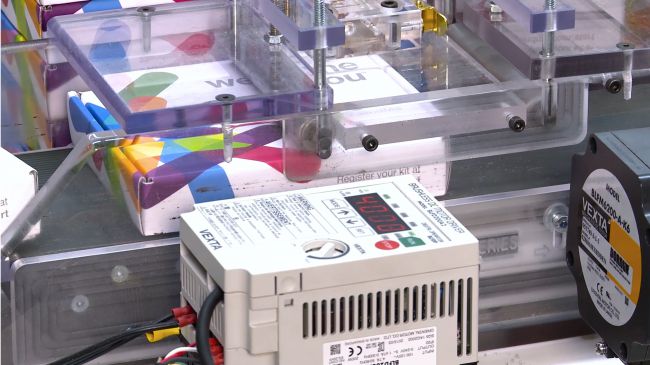
Verdict
23andMe is one of the best DNA tests on the market right now. It offers detailed results about both ancestry and health in a way that’s extremely easy to understand and navigate. Although health testing costs you extra, it’s well worth it to get a deeper understanding of your DNA.
It’s one of the few companies that offers such a breadth of insights, including a lot of health information, details about your Neanderthal ancestry, and analysis of your motherline and fatherline. It's able to offer all this largely because it analyzes three different kinds of DNA.
The main downside is that it’s not cheap. But although 23andMe may be on the expensive side in comparison to some other DNA tests, which are often heavily discounted, it’s worth it in our opinion.
If you’re only interested in genealogy it might be worth looking at some of 23andMe’s competitors, especially AncestryDNA, which focuses specifically on genealogy and family tree building. But most people will find everything they need (and much, much more) from 23andMe.
First reviewed: August 2019
Becca is a contributor to TechRadar, a freelance journalist and author. She’s been writing about consumer tech and popular science for more than ten years, covering all kinds of topics, including why robots have eyes and whether we’ll experience the overview effect one day. She’s particularly interested in VR/AR, wearables, digital health, space tech and chatting to experts and academics about the future. She’s contributed to TechRadar, T3, Wired, New Scientist, The Guardian, Inverse and many more. Her first book, Screen Time, came out in January 2021 with Bonnier Books. She loves science-fiction, brutalist architecture, and spending too much time floating through space in virtual reality.
